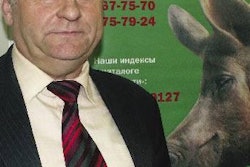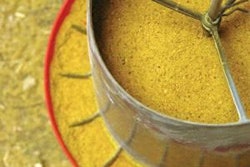
At the end of last year this magazine reported on the training in Denmark of foreign pig-farm managers who were employees of Serbian agribusiness company Delta Agrar, which has about 6000 sows and interests that also extend to slaughterhouses and retail stores. In fact, the training programme has formed part of a larger project involving a group of Danish suppliers of pig production technology.
Back in 2006 Delta Agrar had contacted these suppliers because it planned to start up a pig production network on a large scale. It wanted to supply its slaughterhouses with own pigs in order to fulfil the complete pork chain from stable to table.
"We chose the Danish technology because of their know-how, expertise and experience both in Denmark and in Eastern Europe countries where conditions are similar to those in our country," says Nenad Vukovic, category and project manager at Delta Agrar.
The request went to companies led by Skov A/S and Egebjerg International A/S to provide a complete project proposal for all the farms. Moreover, Delta asked the Danish group to devise a business plan with economic key figures and expected input and output after a reconstruction had been effectuated.
In turn, the project proposal and business plan were prepared as a joint initiative between the technology suppliers and international consulting companies Skovgaard Agro Consult ApS and Danish Farm Design A/S. The design of the farms was made according to Danish standards for optimal performance and with the focus on animal and human welfare.
Persuaded by the proposal and plan, Delta Agrar started a process in which the first farm (called Napredak) was remodelled with Danish technology in 2007 to have capacity for 1300 sows. The list of companies from Denmark involved at this farm extends from Danbred for genetics to Skov, Egebjerg, Big Dutchman, Ikadan, Fog Agro and Spiraflex for equipment and Vitfoss, AgroSoft and Danish Farm Design for feeds and management systems. Together they have produced a farrow-to-finish site on which there are 8 buildings.
Quarantine and mating control are in a section that has 510 stalls to hold sows individually. Boar housing consists of 5 pens with an alley so a boar can be walked in front of the sows during insemination. Feeding in this area is from long troughs made of stainless steel mounted about 12cm above the floor. At 4 weeks after mating, the sows move to the gestation area in the next building.
Gestation here is in groups, to make sure the accommodation matches potential future legislation. Pen gestation on this unit takes the form of free-access stalls for the group-housed sows. In total the facility contains 10 pens that hold 50 sows per pen, plus 12 pens with 6 gilts in each of them. Every pen contains 2 rows with stalls placed in parallel. The dunging area between the rows is 3.25 metres wide.
Farrowing places at Napredak are 340 crate-pens with floors completely of plastic slats. The pen size of 1.65m x 2.70m includes a heating plate for the piglets. A covered creep area over the heat plate makes it possible to lower the room temperature, to save energy and to increase the sows' feed intake.
Nursery accommodation consists of 8 sections. Each of these has 32 two-climate pens so there are 5200 rearing places. Each pen measures 2.05m x 4.20m. Its floor is part-slatted in that 2.30 metres of plastic slats lead from 1.90 metres of solid surface incorporating underfloor heating. At the end of each pen is a 1.25m cover which secures a warm lying area for the newly-weaned pigs. Again the covered area also makes it possible to reduce the room temperature. The pigs eat from wet/dry feeders.
Grow-finish pens are contained in 3 buildings, some 206 metres long. The 6 sections per house and 52 pens per section add up to a total of 11 232 finishing places. With 12 pigs per pen, the stocking density works out at 0.77 square metres per pig.
Napredak is designed for housing 1285 sows and the targets stipulated in the business plan were to wean 11.6 piglets per litter, produce 25.3 finishing pigs per sow annually and therefore send 32 450 finishers for slaughter per year. At the end of January 2008 the first weaning were done and since then the average number of weaned piglets per sow has been around 13. Bear in mind that the results are based only on gilts.
"The first results exceed what we expected," Nenad Vukovic says.














